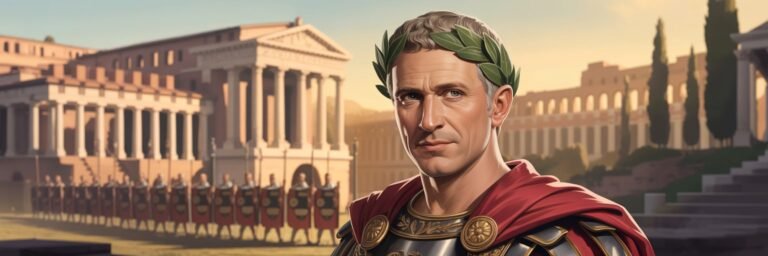INTRODUCTION
The course of history is like a mighty, broad river. It ebbs and flows with the push and pull of a million different currents, some crashing dramatically into the flow, others slipping quietly under the surface. Those currents are the myriad people, movements, and revolutions that have shaped the world we know today. Key among them is a select group of individuals, historical figures of monumental import, that have set the course of the river irrevocably in their wake.
HISTORICAL BACKGROUND
Unraveling the story of the past starts with these individuals. We look back millions of years to Homo Erectus inventing fire, thousands to the rise of Confucius in ancient China, hundreds to the scientific leaps of Albert Einstein, and decades to the civil rights leadership of Martin Luther King Jr. These and countless others have left their mark on humanity’s shared narrative. Each person embodies an era, illustrates a movement, and demonstrates humanity’s capacity for great leaps toward the future.
For instance, throughout history, a succession of monarchies, dynasties, and republics have risen and fallen around presiding figures. Julius Caesar, for example, wielded his influence to end the Roman Republic and lay the foundation for the Roman Empire—a seismic shift in ancient history that transformed the Western world. In the Middle Ages, a woman like Joan of Arc, acting on purported divine guidance, significantly influenced the course of the Hundred Years’ War, showing history isn’t always written by the strongest or most influential but sometimes by the bravest.
THEORIES AND INTERPRETATIONS
Many historians subscribe to the Great Man Theory, positing that history is primarily shaped by the impact of great men, or heroes; highly influential individuals who, due to personal charisma, intelligence, wisdom, or political skill, use their power in a way that significantly alters the course of history. Criticism of this theory argues that it compliments the “top-down” approach, undervaluing the contributions of ordinary people.
An alternative interpretation, the People’s History theory, holds that ordinary people, not leaders, are the primary drivers of change. This theory emphasizes a “bottom-up” approach, considering everyone’s role and collective struggle to understand how history develops.
MYSTERIES AND CONTROVERSIES
Most historical figures are shrouded in layers of mystery, with their narratives subject to interpretation, making their influence on history a constant topic of controversy. For instance, the true motives behind Caesar’s power play in Rome stir debate, as do the visions that inspired Joan of Arc to lead an army.
A recent example is the figure of Mahatma Gandhi. Revered worldwide for leading India’s movement for independence from Britain through nonviolent civil disobedience, Gandhi’s reputation is not without controversy. Critics argue that aspects of his philosophy and political strategy had a detrimental influence in India, contributing to shortcomings in the nation’s path towards modernity.
SYMBOLISM AND CULTURAL SIGNIFICANCE
Historical figures transcend their era to become timeless symbols in a cultural context. Turning back to Julius Caesar, he embodies the idea of absolute power and its precariousness. His legacy lingers as a cautionary tale against autocracy, epitomized in the phrase “beware the Ides of March.”
Joan of Arc, on the other hand, is synonymous with valiant courage and strength against overwhelming odds, transforming into a feminist icon over centuries. Meanwhile, figures like Gandhi have come to symbolize nonviolent resistance worldwide.
MODERN INVESTIGATIONS
In the digital age, investigations into historical figures have become more accessible and varied. Biographies, documentaries, and academic research present new opportunities to reassess the impact of such figures.
Digital humanities offer interactive ways to analyze, display, and disseminate historical data, revising our understanding of history. Recent research has applied these tools to further our understanding of historical figures, framing them in new ways, and offering new perspectives on their influence.
LEGACY AND CONCLUSION
The true power of historical figures lies in their legacy. Whether they are remembered as pioneers, leaders, villains, or martyrs, it is their lasting influence that shapes our world. They serve as touchstones for us, as foundations upon which we build the present and future.
More than our narrative’s main characters, they are the manifestations of humanity’s historical strides. It is Gandhi’s tireless belief in non-violence that reiterates the power of peace for generations to come. It is Joan of Arc’s almost reckless bravery that teaches us that to fight for what we believe in, regardless of our status in society. It is Julius Caesar’s ambitious machinations that remind us of the allure of power and its potential downfall.
In the end, history is a rich tapestry woven by innumerable hands. Understanding how key historical figures have shaped that tapestry is but one thread in the larger exploration of our shared past. Through them, we glean insight into our past, lessons for our present, and perhaps even guidance for our future’s course.


